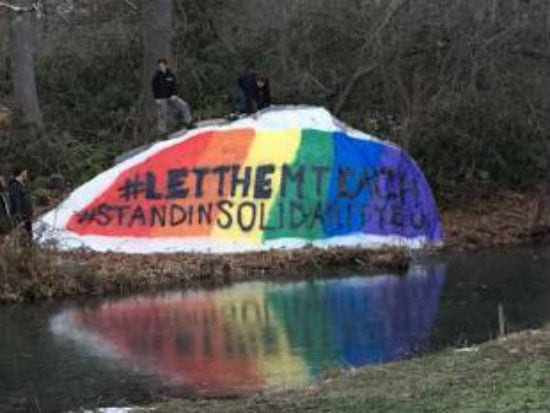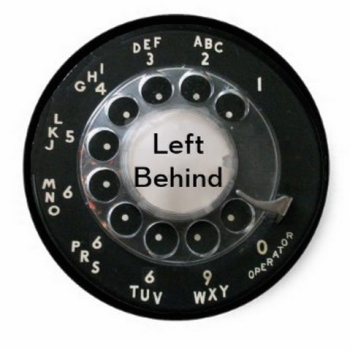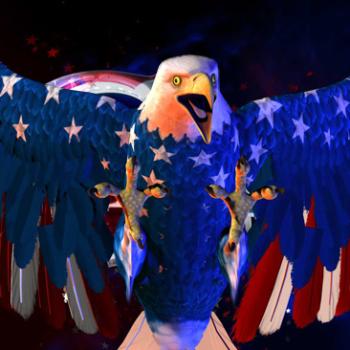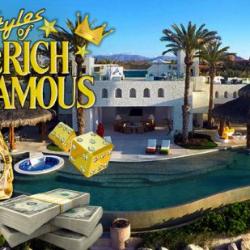While my brother, to this day, has never explicitly admitted nor categorically denied it, it was always widely assumed that he was behind the “Painters for Christ.” As presented to me by several of my professors in college, the evidence seemed to support this suspicion.
I should step back and explain that my brother graduated from Eastern College (now Eastern University) a year before I arrived there as a freshman. We looked enough alike that I had several profs my freshman year who struggled not to call me “Dave.” Two of them settled on “Mr. Clark” as a crutch and wound up calling me that for the rest of my time there.
Eastern has a beautiful, park-like campus carved out of several former Mainline estates. The campus includes several picturesque ponds. The smallest of those ponds sits in the heart of the campus and on the not-very-far far side of that pond sits an enormous boulder. This is “The Rock.”
Legend has it that sometime back in the mists of history — the ’70s, I think — the school planned to have its official seal carved into that rock. This apparently wouldn’t be cheap, and the expense created a controversy that delayed the project. And at some point during all of that, somebody snuck out in the middle of the night and spray-painted a seal — as in the marine mammal, the “Arf, arg, give me herring” kind of seal — on The Rock. The painter was never identified — or wholeheartedly pursued — and thus painting the rock evolved into an informally semi-permitted campus tradition.

This unofficial practice came with an unwritten set of unofficial rules. Profanity and sexual innuendo were forbidden. So was directly naming and insulting or attacking anyone personally. Other than that, it was pretty much fair game. One was expected to make at least a minimal effort to avoid getting “caught” in the act, but the administration and campus security was also expected to make an even more minimal effort to catch anyone doing it.
The Dean sometimes had to playfully explain this without ever quite saying it to earnest students who knocked on his door to inquire about how they might get permission to paint the rock to announce, say, the Homecoming Dance or some other official and wholesome campus event. “I’ve never given anyone permission to paint the rock,” he would say. “It’s not something I can officially approve.” Sometimes he would need to raise his eyebrows suggestively several times before they caught on.
Painting the rock thus became a kind of pre-computer age version of social media. (A bit like Twitter, I suppose, in that spray-painting on boulders imposes a pretty strict character limit.) It was where students offered birthday greetings or cheered on the basketball team, where they promoted club events and concerts and plays. And it was also where they sometimes offered commentary on national or campus politics or on whatever theological or religious debates were currently rippling through the school.
I should state, for the record, that I was never explicitly encouraged to start painting the rock by any professor at Eastern College. What they did, rather, was to lament that the last year of rock-painted commentary had been something of a disappointment. It just wasn’t as funny or as sharp as it had been, they said, back during the heyday of the Painters for Christ. And they would focus this lamentation in my direction, as though I had any idea what they were talking about.
Eventually, some of them explained to me that the Painters for Christ was believed to be mostly just one person, and that this person — a paint-the-rock pamphleteer of legendary status — was almost certainly my own older brother. The Painters went silent during the semester my brother studied abroad, resuming when he returned, and then disappearing after he graduated.
I asked him about that. “I had heard that some professors thought that,” he said. “That’s pretty circumstantial.”
The story I heard from the dean was that just before graduation that year, he entered his locked office to find on his desk a giant trash bag filled with empty spray paint cans and a note reading, “Dear Ted, Thanks for a great year. The Painters for Christ.”
The dean made me promise that someday I’d explain to him just how my brother got into that office, but all my brother ever said to me was, “That’s interesting. I suppose someone must have found some way to get in there without a key.”
That’s the vaguely evasive way my brother always spoke of the painting of the rock. Even when he seemed to be offering advice on, say, the money-saving step of “farting the rock.”
White paint isn’t free, after all, and it takes a lot of white paint to cover a whole boulder before repainting it. Plus you have to wait for it to dry. “I would imagine that would be a lot of extra work,” my brother “imagined.”
But one day, he explained, the campus awoke to find a cheerful birthday greeting on the rock: “Happy Birthday Bubbles, you fart,” it said. And the word fart was regarded as so unacceptably scandalous that campus maintenance workers went out that very morning to paint over it, leaving a clean blank canvas for anyone who might decide to write something there that night. And so, he said, the people who painted the rock — whoever that might be — learned that they could get a free, fresh white background just by adding that gently offensive f-word and waiting for campus maintenance to come out and cover it up.
To be clear, my brother never said that he did this himself. It was just something he had heard might be done.
I eventually was able to keep my promise to the dean and explain to him how one might find their way into his locked office. I explained that for him on a note left on that same desk. That note also acknowledged that I could not say for sure if that was how my brother and/or the original Painters for Christ pulled it off.
The second act of the Painters for Christ happened to coincide with my four years at Eastern. In keeping with what some might perceive to be a family tradition, I won’t say anything beyond that other than to say that I hope the second period of PFC activity approached the standards set by the first.
Regardless of what, if any, role members of my family may or may not have played in the Painters for Christ, I still defend that name as reverently irreverent. While some saw it as sacrilegious — a form of taking the Lord’s name in vain, I saw it more as tweaking the vanity of the way “for Christ” gets tossed around as a cheap form of instant, unquestionable sanctification for just about anything in the white evangelical subculture. Given that this name emerged on a Christian college campus that hosted groups touting themselves as athletes for Christ or as clowns for Christ, I’d always assumed that was its intent.
But I don’t know. I suppose I could ask my brother, but I doubt I’d get a straight answer.
Anyway, this little walk down memory lane was prompted by my recently tripping over “Champions For Christ” — which is apparently the motto of Liberty University. (Liberty actually refers to it not as a motto but as the school’s “tagline,” which is even worse.) I was trying to write about why that is a terrible motto/tagline, and all the work it is asking “for Christ” to do there, and struggling to wrestle with the many layers of awfulness there, my mind kept going back to “Painters for Christ.” Hence today’s odd lapse into story time.
We’ll get back to the Liberty thing — and all the other Liberty things — later this week.












